The 6 Types of SEA Shoppers: Which One Are You?
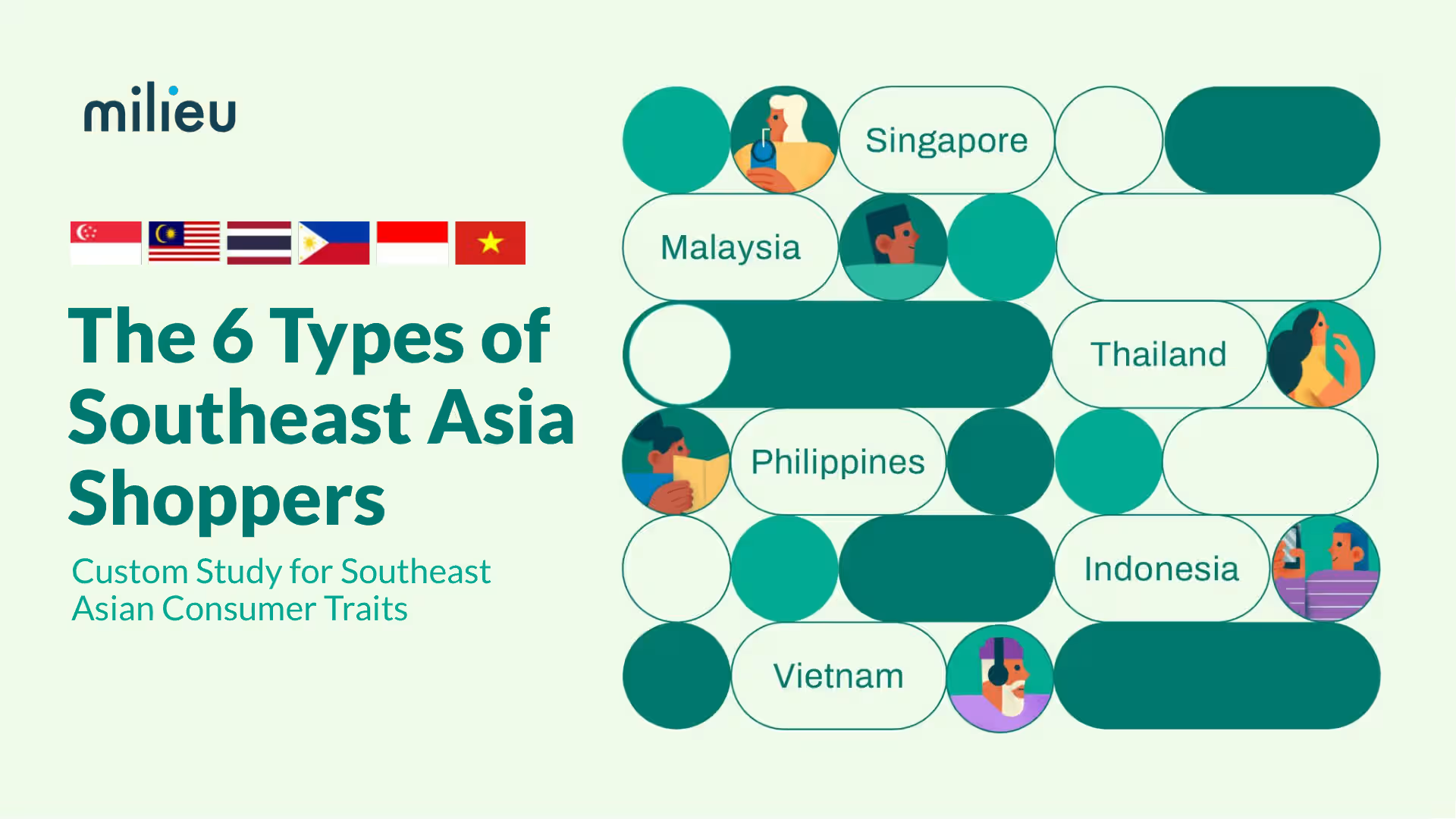
How Southeast Asia Split Into Six Shopping Personalities—And Why You're Probably More Than One
There's a moment that happens every time you open a shopping app. Your finger hovers over the checkout button. You've got items in your cart. You know you shouldn't. But you also know you will.
Welcome to 2025 in Southeast Asia, where 51% of us are spending more than we did three months ago, while 38% describe our shopping mood as "cautious."
Wait—aren't those the same people?
Yes. Yes, they are.
After analyzing spending data from 3,054 consumers across Singapore, Malaysia, Thailand, Philippines, Indonesia, and Vietnam, we've discovered something fascinating: Southeast Asian shoppers have fractured into six distinct behavioral tribes. But here's the twist—you're probably not just one of them. You're likely three.
Let me introduce you to yourself.
TRIBE 1: The Anxious Optimists (32-34% of SEA)
"I'm worried about money, so I'm shopping for deals... tomorrow will be better... right?"
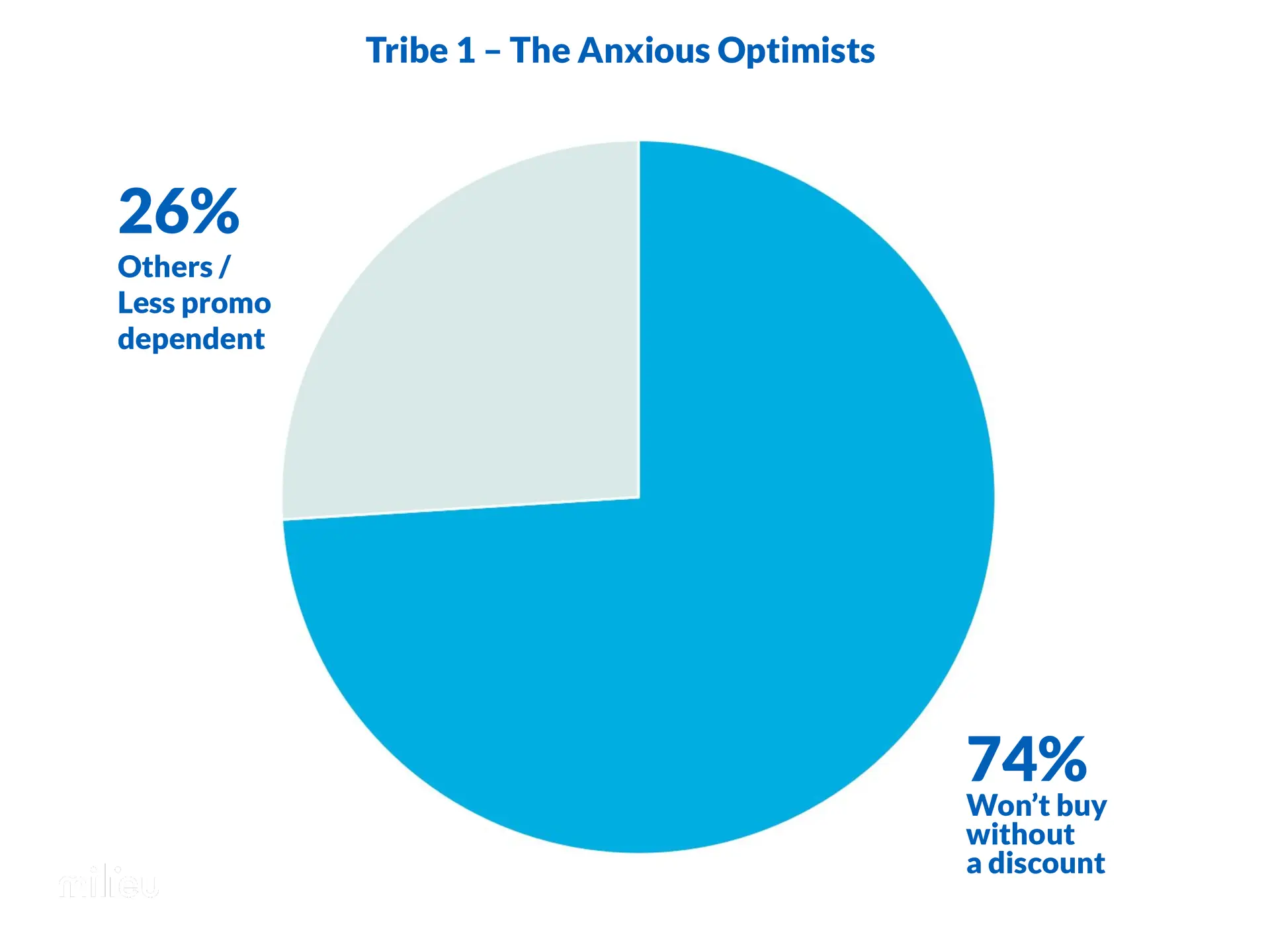
You know you're an Anxious Optimist when:
- You describe your current spending mood as "cautious" but somehow you've spent more this month than last
- You're already planning to feel "more optimistic" in three months (classic optimist move)
- You ALWAYS wait for sales—74% of you won't buy anything without a discount
- You compare prices across at least three platforms before every purchase
- Your decision-making mantra: "Best value for money" (22% of you live by this)
Where you live: Thailand leads this tribe at 56% identifying as cautious, with Vietnam close behind. But honestly? This is the default mode for modern SEA consumers.
What you're doing right now: You've got four browser tabs open comparing the same rice cooker on Shopee, Lazada, the brand website, and Carousell. You'll buy it in two weeks when there's a sale. You know there will be a sale.
Your contradiction: You're spending MORE money (51% of you are) while feeling MORE anxious (38% mood). How? You're buying more things, just cheaper versions of them. The rice cooker you finally buy will be the smaller model, the older version, or bundled with something you don't need but technically makes it a "better deal."
What brands need to know about you: Loyalty means nothing. Value means everything. The second someone offers me free shipping or 10% off, I'm gone. But here's the secret—I'll come back if you give me a better deal next time. This isn't disloyalty; it's strategy.
Your most likely to say: "Let me just check one more app" (spoiler: you won't)
TRIBE 2: The Discount Hunters (70% of SEA)
"If I paid full price, did I even really buy it?"
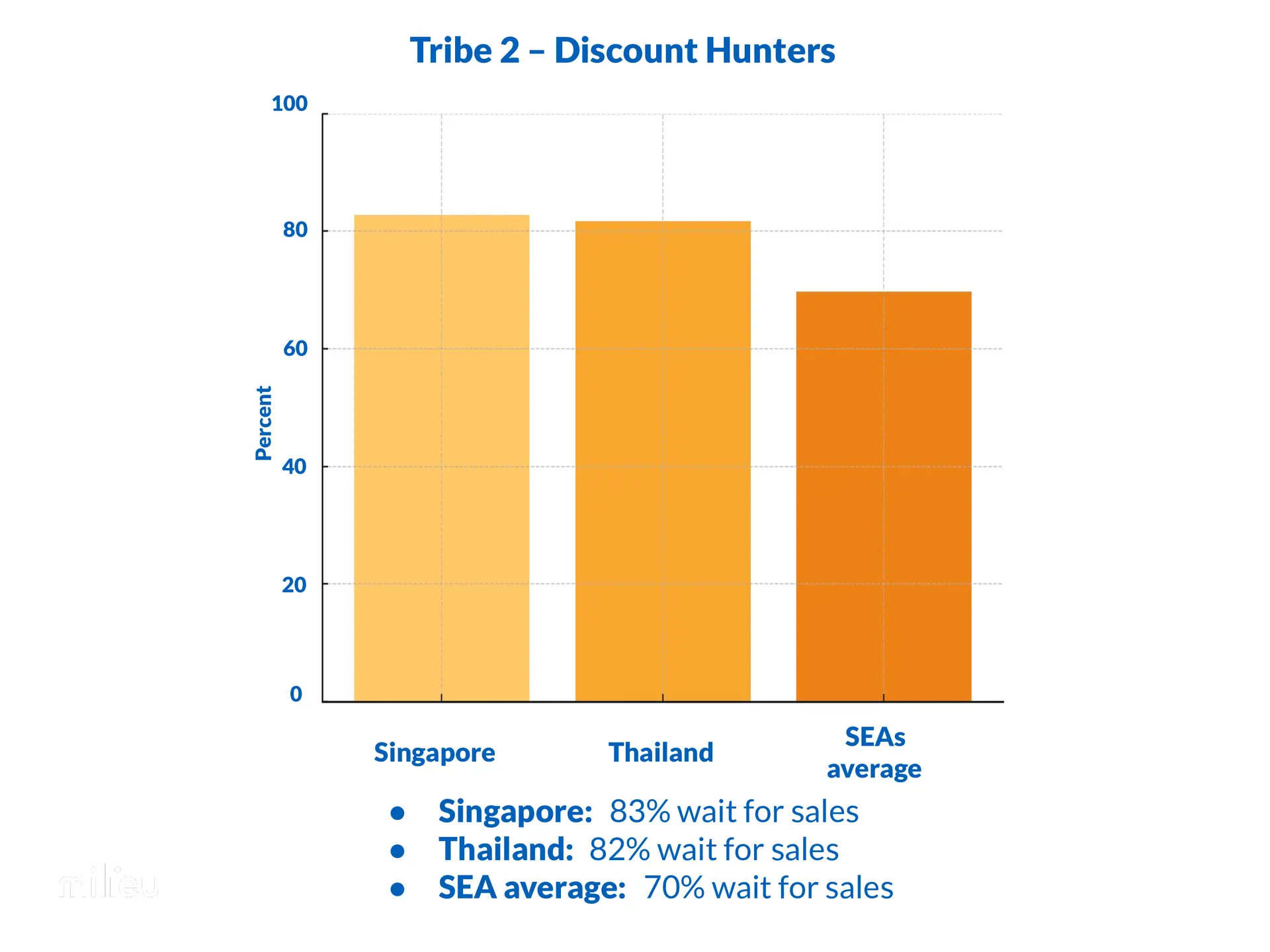
You know you're a Discount Hunter when:
- You literally cannot remember the last time you bought something that wasn't on sale
- 70% of your purchases were driven by discounts, 61% by Buy 1 Free 1 offers
- You know every promo code on the internet
- You're in 47 different brand WhatsApp groups just for the member-only deals
- Black Friday, 9.9, 10.10, 11.11, 12.12—these aren't dates, they're religious holidays
Where you live: Singapore leads at 83% waiting for sales (the rich hunt discounts harder than anyone), followed by Thailand at 82%. But let's be real—this is 70% of ALL of Southeast Asia.
What you're doing right now: You didn't "find" that promo code. You have a Notes app folder labeled "CODES" with 47 entries, organized by platform and expiry date. You're basically a part-time savings analyst.
Your contradiction: You say you want "convenience" (33% of you) but you'll spend 45 minutes comparing prices to save $2. Time is money, except when money is money, then time doesn't exist.
The math you live by:
- Original price: $100
- Sale price: $70
- You "saved": $30
- You spent: $70
- Your brain registers: "I MADE $30 today"
What brands need to know about you: I don't care about your brand story, your sustainability mission, or your influencer partnerships. I care about your checkout price. But—and this is crucial—if you give me value consistently, I'll become your most vocal advocate. I'll tell everyone about the deal I got. I'm your best word-of-mouth marketing, just price me right.
Your relationship status with brands: "It's not personal, it's just that Shopee has 25% off right now"
Your most likely to say: "It's basically free" (it cost $70)
TRIBE 3: The Grocery Grinders (59% of SEA)
"My grocery bill went up but I'm eating worse. Make it make sense."
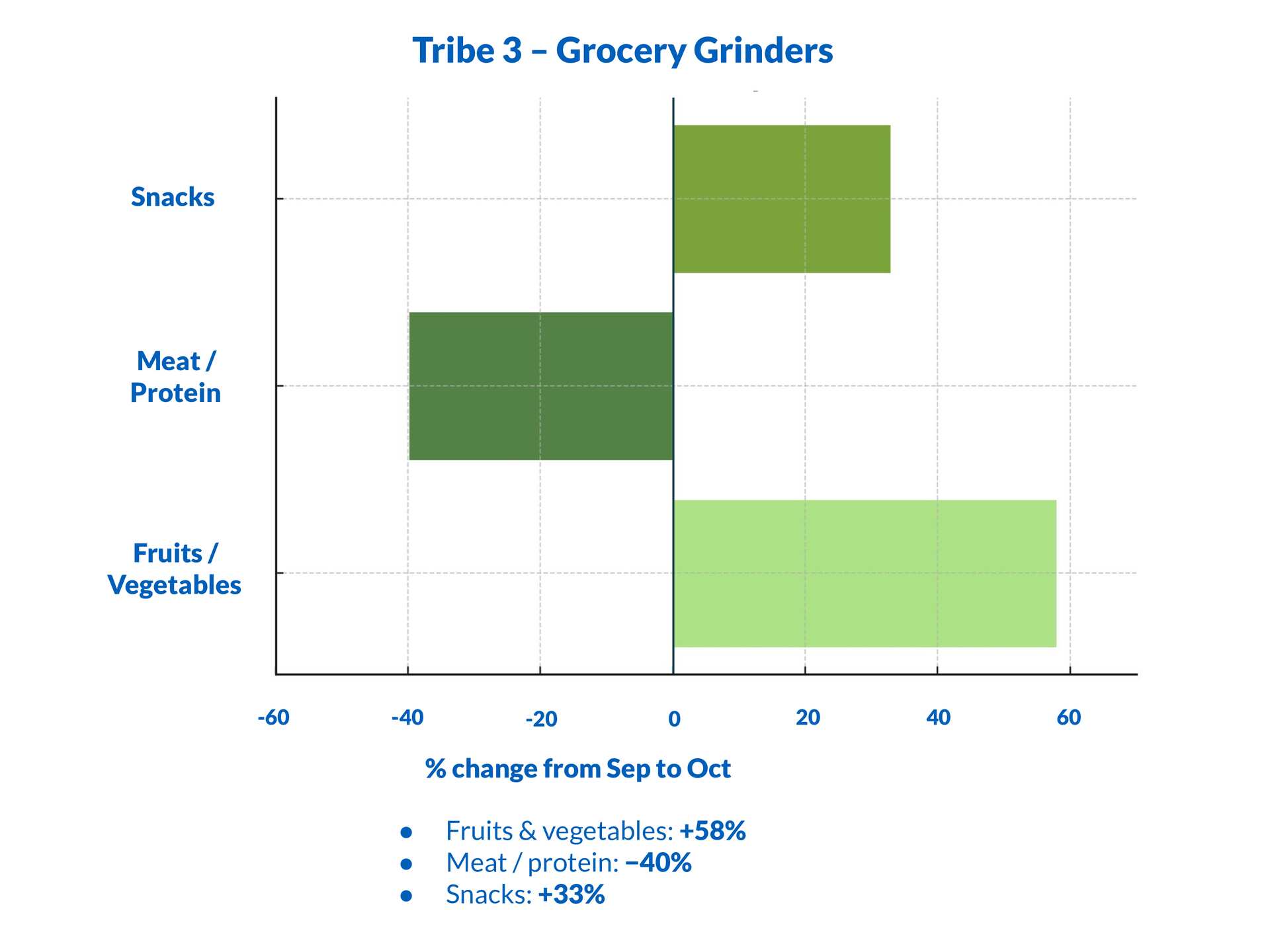
You know you're a Grocery Grinder when:
- You spent MORE on groceries last month (59% of you did)
- But you bought LESS meat and protein (30% cut this)
- Snacks went up 20%, protein went down 30% in your cart
- You've started saying things like "chicken is expensive" unironically
- Your pantry has never had more instant noodles
Where you live: Philippines leads at 77% increasing grocery spend, but this is the universal SEA experience right now. Groceries are everyone's #1 "must-spend" at 73%.
What you're doing right now: You're standing in the supermarket aisle doing mental math. The chicken breast is $8. The drumsticks are $5. The instant noodles with "real chicken flavor" are $0.80. You buy the noodles and tell yourself it's basically protein.
Your contradiction: You're spending MORE on groceries but getting LESS nutrition. Welcome to inflation's cruelest trick—your budget went up, your health went down.
The substitution game you're playing:
- Premium protein → cheap protein → plant protein → carbs with protein flavoring
- Fresh vegetables → frozen vegetables → canned vegetables → vegetables pictured on packaging
- Organic → regular → store brand → "it's food"
What this means for your household:
- Fruits & vegetables: UP 58% (you're trying!)
- Meat, poultry, seafood: DOWN 40% (your wallet said no)
- Snacks & confectionery: UP 33% (your kids said yes)
- Bread & bakery: You're buying more because it's cheaper per calorie
What brands need to know about you: I'm not choosing snacks over protein because I want to—I'm doing it because I have to. The brand that figures out affordable protein solutions wins my loyalty forever. I'm not price-sensitive; I'm price-trapped.
Your most likely to Google: "cheap protein sources" "healthy budget meals" "is rice a complete protein"
Your darkest thought: "Maybe my parents were right about eating rice with every meal"
TRIBE 4: The Digital Natives (40-65% depending on country)
"If I can’t pay on my phone, I’m not buying it."
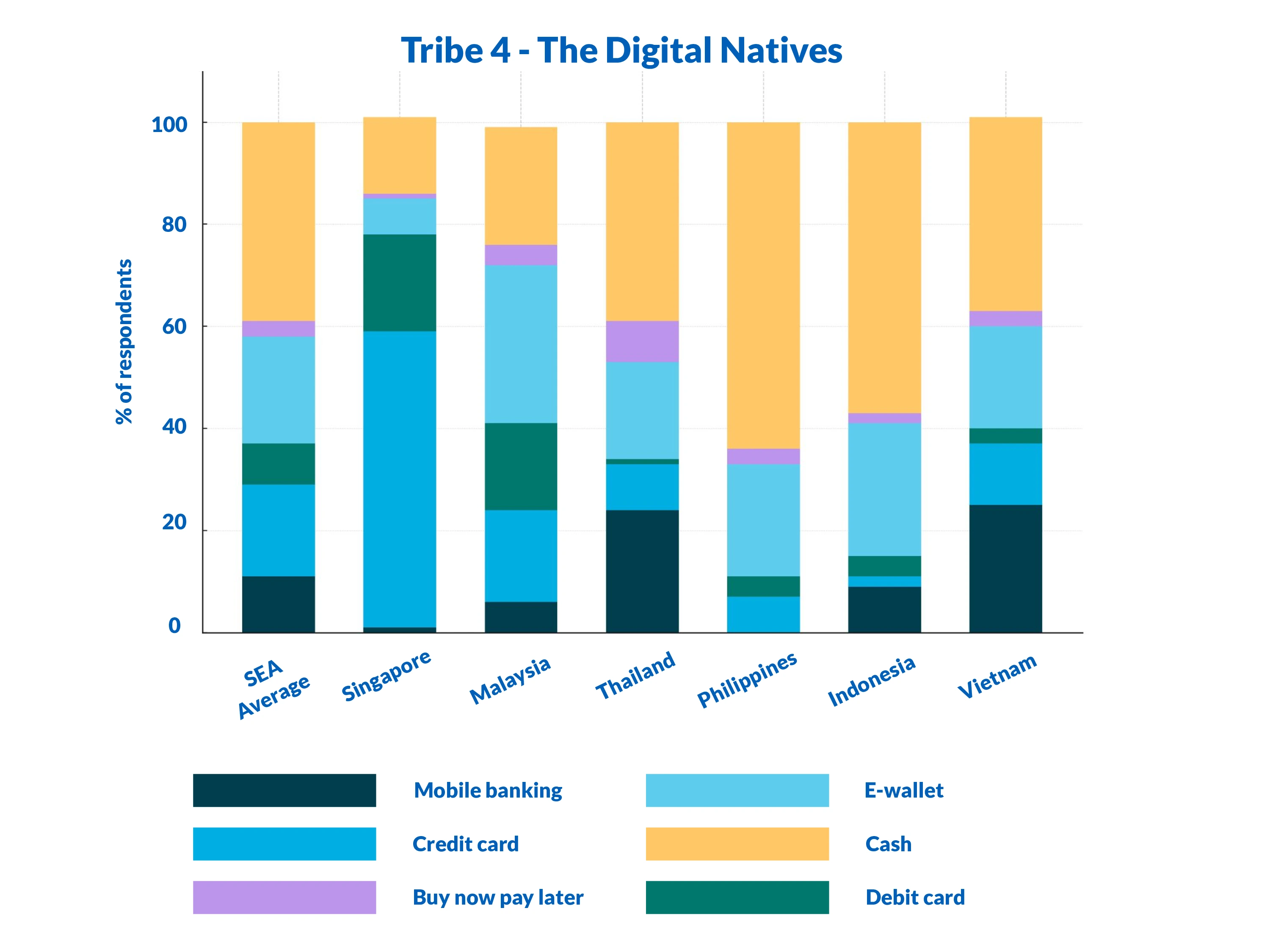
You know you’re a Digital Native when:
- You haven’t carried a physical wallet in weeks. Your entire financial life lives in your phone.
- Cash is still the main payment method for 39% of people in SEA, but for you it is just a backup.
- Your primary way to pay is something on a screen: mobile banking, QR, e-wallet or a card saved in an app.
- You shop on online marketplaces more than in physical stores (like 47% of SEA consumers).
- You have bought something straight from TikTok or Instagram without fully realising it. Two days later it appears at your door.
- Your banking app has sent you at least one “unusual activity” notification that was actually just you shopping on three apps at once.
Where you live: The rails are different, but the habit is the same: the phone is the wallet.
- In Philippines and Indonesia, e-wallets like GCash, Maya, GoPay, OVO and Dana are everywhere.
- In Malaysia, people happily mix credit cards, e-wallets and bank apps, always chasing the best promo or cashback.
- In Thailand and Vietnam, people move money through bank apps and QR codes at lightning speed.
- In Singapore, credit cards are still king, but most of them now live inside Apple Pay, Google Pay or PayLah.
Different tools, same behavior. The ecosystem changes by country, but the default is digital.
What you're doing right now: You are on the train with no cash and no physical cards, only your phone.
- Lunch will be paid with a bank app or QR at a food stall.
- Coffee is on a credit card linked to your mobile wallet.
- Groceries later tonight will be ordered on a marketplace and paid with whichever app has the best promo or cashback.
You have not touched cash all day, but money has definitely left your account.
Your contradiction: You say you love “convenience”, but your phone has five or six payment apps because each one has a different promotion.
You turned convenience into a part-time job managing flash sales, coins, cashback, points and QR codes.
Your payment profile:
- Philippines Digital Native: Splits bills on GCash or Maya for almost everything. Cash exists mainly when someone says “I’ll pay first, you all just transfer me.”
- Indonesia Digital Native: Has GoPay, OVO and Dana on the same phone. Loyalty is for discounts, not for brands.
- Malaysia Digital Native: Juggles multiple e-wallets and credit cards, switching between them depending on which one has vouchers, coins or extra cashback today.
- Thailand & Vietnam Digital Native: Can scan QR literally everywhere, from big malls to tiny street stalls. Forgetting your phone at home is more serious than forgetting your wallet.
- Singapore Digital Native: Still loves credit cards, but most of them are already in the phone. Points, miles and cashback are tracked like a side hustle.
What brands need to know about you: If your checkout does not support the digital payment options I already use, I am gone. I am not going to find an ATM or type card numbers manually.
I also trust online reviews more than brand messaging. One strong review can move me more than an entire ad campaign, so you had better fix your ratings.
Your hot take: “Physical stores are just showrooms for things I will buy online later.”
Your most likely to say: “Just send me the QR or payment link, I’ll transfer now” – before you even ask what the final total is.
TRIBE 5: The Stress Splurgers (19% of SEA)
"I'm anxious about money, so I'm going to buy things to feel better about being anxious about money"
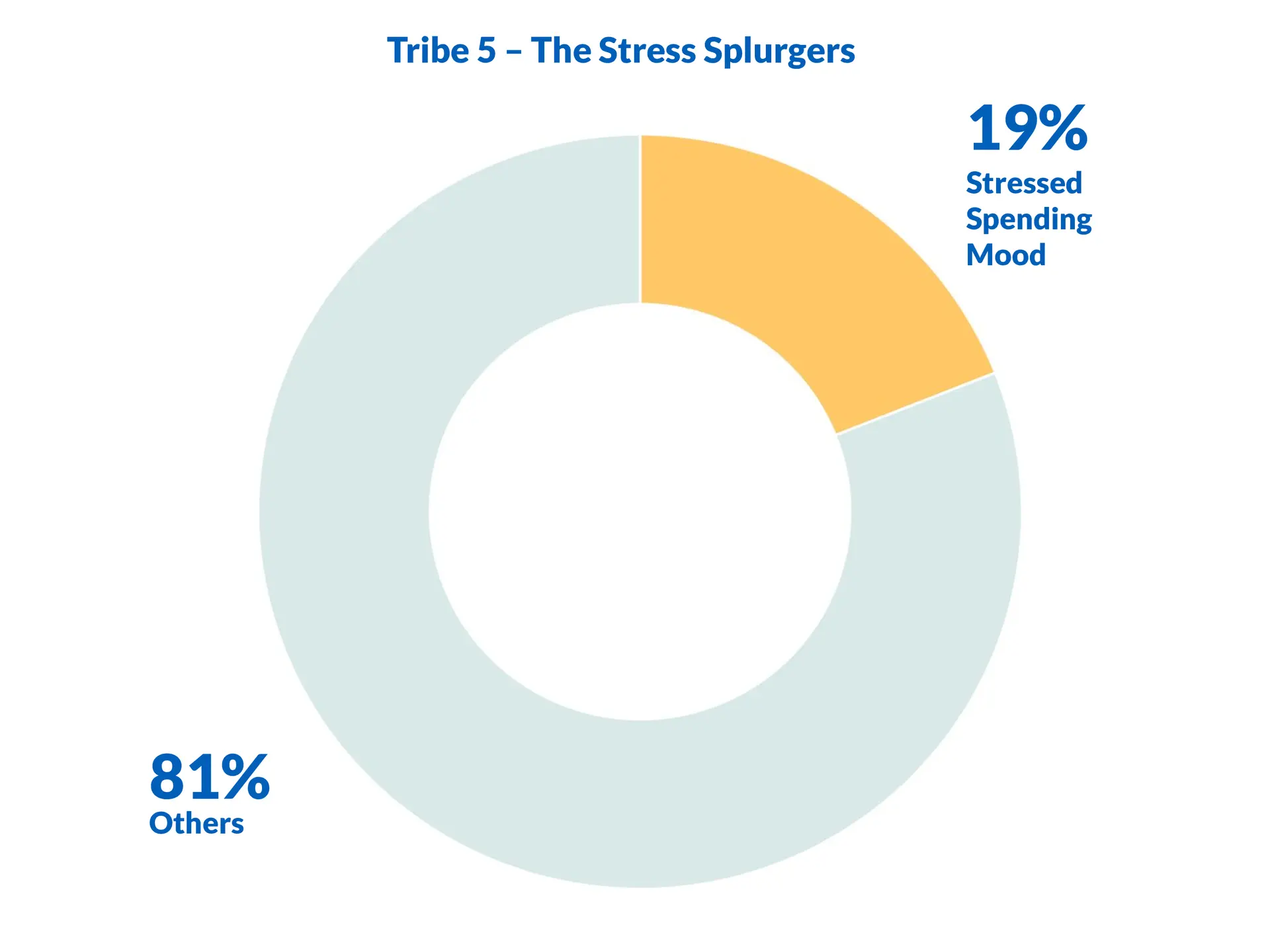
You know you're a Stress Splurger when:
- You describe your spending mood as "stressed" (19% of you, 25% in Philippines)
- But you've spent MORE this month than last (51% of you)
- You make impulse purchases (11% of you admit this)
- You've justified a purchase with "I deserve this" at least three times this week
- Your cart has therapy items: candles, face masks, that book you won't read
Where you live: Philippines leads at 25% identifying as stressed. But honestly, this is less about geography and more about your current mental state. We're all one bad day away from joining this tribe.
What you're doing right now: You just had a rough day at work. You open Shopee. You don't need anything. You buy something anyway. The dopamine hit from "Order Placed" lasts exactly 4 minutes. The guilt lasts until the package arrives, at which point you feel briefly better, then worse.
Your contradiction: You'd spend an extra $100 on necessities (you're worried about basics) AND splurge it on your wishlist (you need emotional relief). These aren't different people—it's you on Tuesday vs. you on Friday.
Your spending triggers:
- Bad day at work → new shoes
- Fight with partner → food delivery
- Existential dread → skincare haul
- Good day → "I deserve a treat"
- Bad day → "I need a pick-me-up"
- Normal day → "Just browsing" (narrator: they bought three things)
What your purchase history reveals:
- Entertainment & streaming: This is a "must-spend" for 8% of you (emotional support subscription)
- Fashion & beauty: 19% won't cut this even when budgets are tight
- Dining out/delivery: 30% planning to spend MORE in next 3 months (food is comfort)
What brands need to know about you: I'm not buying your product—I'm buying a feeling. The packaging matters. The unboxing matters. The little thank-you note in the box matters. I'm not your most profitable customer, but I'm your most emotional one. Market to my feelings, not my logic.
Your BNPL relationship: You're the 3% using Buy Now Pay Later. Future you will deal with the consequences. Present you needs this serum.
Your most likely to say: "It was on sale!" (it wasn't) "I needed this" (you didn't) "Self-care isn't selfish" (debatable)
Your therapist's take: "Have you considered that shopping might be a coping mechanism?" Your take: "Have you considered that this moisturizer is 40% off?"
TRIBE 6: The Experience Seekers (33% of SEA)
"You can't take things with you when you die, but you can post experiences on Instagram"
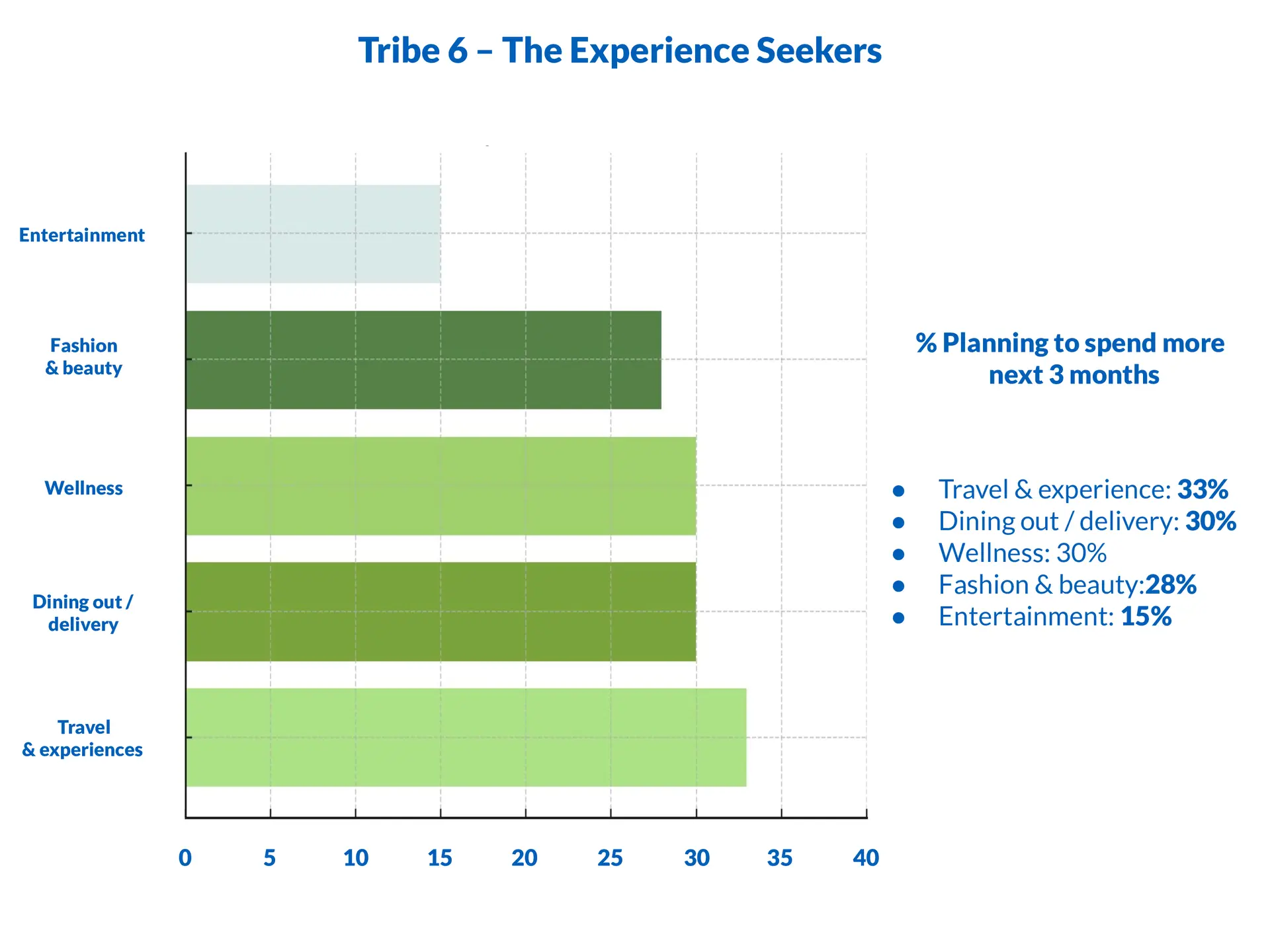
You know you're an Experience Seeker when:
- You're planning to spend MORE on travel in the next 3 months (33% of you are)
- Dining out is non-negotiable—30% planning to increase this
- Wellness isn't optional (30% spending more on gym/supplements)
- You describe your mood as "optimistic" (22%) or at least "steady" (15%)
- You feel confident about your finances (40% combined somewhat/very confident)
- Your camera roll is 80% food and travel
Where you live: Philippines leads at 49% planning to increase travel spending, Indonesia at 53% boosting savings AND experiences (they're playing both sides). But this tribe exists in every country—you're just more likely to afford it in Singapore.
What you're doing right now: You're planning your next trip before you've finished paying for the last one. You have a running Google Doc titled "Places to Visit 2025" with 23 destinations and a realistic budget for maybe two of them. You'll go to all 23.
Your contradiction: You'll cut back on groceries (some of you) but never travel. You'll wear the same clothes for three years but drop $500 on a weekend getaway. Your priority hierarchy is: experiences > everything else > groceries if there's money left.
Your spending philosophy:
- Material things depreciate → don't buy them
- Experiences appreciate (in memory, in Instagram likes) → invest heavily
- That concert ticket costs $150 → "That's only $5 per song!"
- That flight costs $400 → "That's only $50 per day of vacation!"
- Math doesn't math, but YOLO does
What you're spending on:
- Travel & experiences: 33% increasing (highest planned spending increase)
- Dining out/food delivery: 30% increasing (experiences = meals out)
- Wellness: 30% increasing (gym membership = experience)
- Fashion & beauty: 28% increasing (look good for the experiences)
- Entertainment: 15% increasing (concerts, shows, events)
Your relationship with material goods: "I only buy things I need" (you bought a $300 jacket for the Iceland trip you're taking in 14 months)
What brands need to know about you: Sell me the experience, not the product. I don't want a hotel room—I want a story to tell. I don't want a meal—I want an Instagrammable moment. I'm not expensive to reach; I'm expensive to satisfy. But if you deliver? I'm your best influencer. My friends will follow me anywhere I recommend.
Your most controversial opinion: "Savings are for people who don't know how to live"
Your budget reality check: You're either genuinely comfortable (Singapore/Malaysia version) or financing this lifestyle with optimism and YOLO energy (Philippines/Indonesia version). Either way, you're committed to the bit.
Your most likely to say: "You can't put a price on memories" (the price was $2,847)
THE PLOT TWIST: You're Not Just One Tribe
Here's what the data really reveals: You're probably three of these tribes at once.
You're a Discount Hunter for groceries (TRIBE 2), a Stress Splurger for skincare (TRIBE 5), and an Experience Seeker for your next vacation (TRIBE 6).
The same person who:
- Spends 30 minutes comparing rice prices (Grocery Grinder)
- Will impulse-buy $80 worth of face masks at 2 AM (Stress Splurger)
- Has already booked a flight for next month (Experience Seeker)
- Using three different e-wallets to maximize cashback (Digital Native)
- While feeling "cautious" about the economy (Anxious Optimist)
This is the new Southeast Asian consumer.
We're not confused. We're not contradictory. We're strategic with necessities, emotional with splurges, and optimistic about experiences.
What This Means: The Shopping Identity Crisis Is Real
The reason these six tribes exist isn't because we're six different types of people. It's because we're one type of person living in economic chaos.
We've developed split personalities to cope with split realities:
- Reality A: Inflation is real, money is tight, proteins are expensive, I need to be careful.
- Response: Become a Grocery Grinder, an Anxious Optimist, a Discount Hunter. Hunt deals, trade down, compare prices, wait for sales, protect the budget.
- Reality B: Life is short, we survived a pandemic, YOLO, I need joy, I deserve nice things.
- Response: Become a Stress Splurger, an Experience Seeker. Buy the thing, book the trip, order the food, feel the feeling.
- Reality C: Technology made everything easy and I'm just clicking buttons now.
- Response: Become a Digital Native. Pay with apps, shop online, trust reviews, never leave house, receive dopamine via delivery notification.
- The truth? We're all six tribes because we have to be.
How to Know Which Tribe You're In Right Now
THE 6-QUESTION TEST:
1. You have $100 extra this month. Do you:
- A) Compare prices for something I've been needing (Anxious Optimist/Discount Hunter)
- B) Buy groceries including actual protein (Grocery Grinder)
- C) Order it online and pay with e-wallet (Digital Native)
- D) Splurge on something from my wishlist (Stress Splurger)
- E) Book a weekend trip (Experience Seeker)
2. Your current shopping mood is:
- A) Cautious but optimistic about next quarter (Anxious Optimist)
- B) Calculating – I know every promo code (Discount Hunter)
- C) Convenient – I shop from my phone (Digital Native)
- D) Stressed but shopping helps (Stress Splurger)
- E) Optimistic – treating myself (Experience Seeker)
- F) Tired – groceries are too expensive (Grocery Grinder)
3. When you see a sale, you:
- A) Wait to see if it gets better (Anxious Optimist)
- B) Already knew about it from my deal alerts (Discount Hunter)
- C) Buy it on my phone in 2 clicks (Digital Native)
- D) Buy it because I deserve it (Stress Splurger)
- E) Ignore it, I'm saving for travel (Experience Seeker)
- F) Check if it's on groceries (Grocery Grinder)
4. Your cart right now has:
- A) Items saved for comparison (Anxious Optimist)
- B) Everything on promo (Discount Hunter)
- C) Whatever TikTok showed me (Digital Native)
- D) Things I don't need but want (Stress Splurger)
- E) Travel accessories (Experience Seeker)
- F) Groceries + cheaper protein alternatives (Grocery Grinder)
5. When budgets tighten, you cut:
- A) Wait for better times while maintaining staples (Anxious Optimist)
- B) Nothing – I'll just find better deals (Discount Hunter)
- C) Whatever isn't available on my preferred app (Digital Native)
- D) Everything except my emotional support purchases (Stress Splurger)
- E) Material goods but never experiences (Experience Seeker)
- F) Protein, apparently (Grocery Grinder)
6. You trust recommendations from:
- A) Friends + price comparisons (Anxious Optimist)
- B) Whoever has the best deal (Discount Hunter)
- C) Online reviews (Digital Native)
- D) Social media + my current mood (Stress Splurger)
- E) Friends who travel (Experience Seeker)
- F) My grocery budget calculator (Grocery Grinder)
Results: If you answered differently to each question, congratulations—you're a normal Southeast Asian consumer in 2025. We're all six tribes now.
The Bottom Line: We're Shopping Through the Paradox
Here's what brands, marketers, and economists need to understand about Southeast Asian consumers in 2025:
We're not irrational. We're adaptive.
We've adapted to:
- Inflation (by becoming Grocery Grinders and Discount Hunters)
- Economic uncertainty (by becoming Anxious Optimists)
- Digital transformation (by becoming Digital Natives)
- Pandemic trauma (by becoming Stress Splurgers and Experience Seekers)
We're not confused shoppers. We're comprehensive shoppers.
The person who spends 20 minutes comparing rice prices will drop $200 on concert tickets without blinking. This isn't contradiction—it's allocation. We're allocating anxiety to necessities and joy to experiences.
We're not six different markets. We're six different moods.
Market to the mood, not the demographic. I'm not a 28-year-old female professional. I'm:
- An Anxious Optimist on Monday morning
- A Discount Hunter at lunch
- A Grocery Grinder after work
- A Digital Native on the commute home
- A Stress Splurger on Wednesday evening
- An Experience Seeker planning the weekend
Same person. Six strategies. One goal: Survive the economy while actually living life.
So, Which Tribe Are You?
Actually, don't answer that. You're all of them. We all are.
The question isn't "which tribe are you?"
The question is: "Which tribe are you RIGHT NOW?"
Check your shopping cart. That's your answer.
Data source: Consumer Spending Tracker, October 2025 | Sample size: 3,054 consumers across Singapore, Malaysia, Thailand, Philippines, Indonesia, and Vietnam

Author
Milieu Team
At Milieu, we’re a team of curious minds who love digging into data and uncovering what drives people. Together, we turn insights into stories—and stories into action. We also run on coffee, deadlines, and the occasional meme.
.avif)




